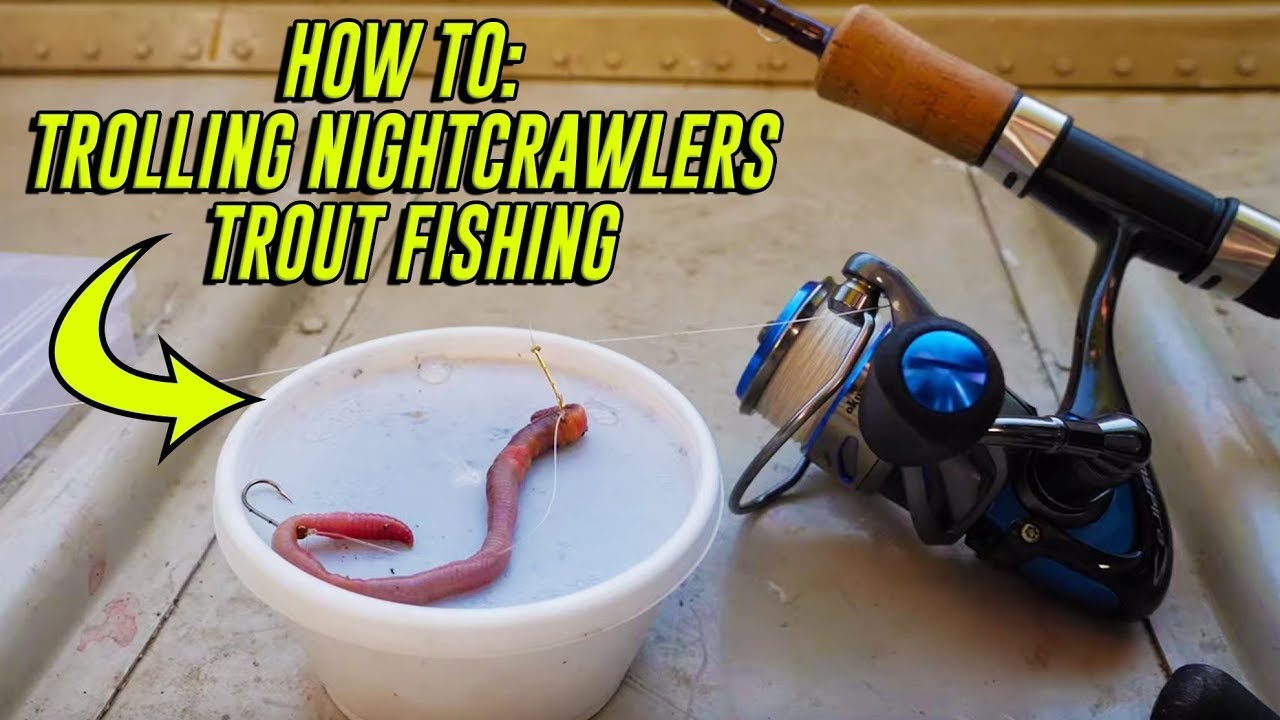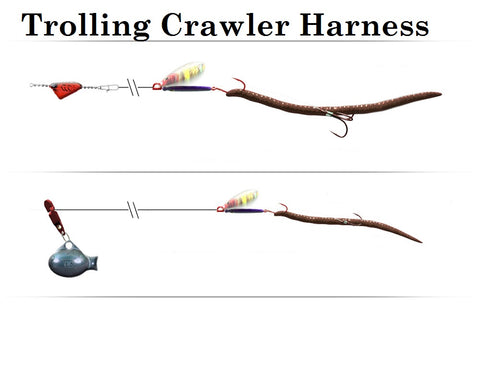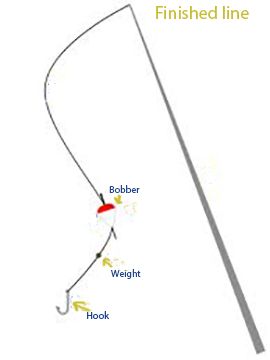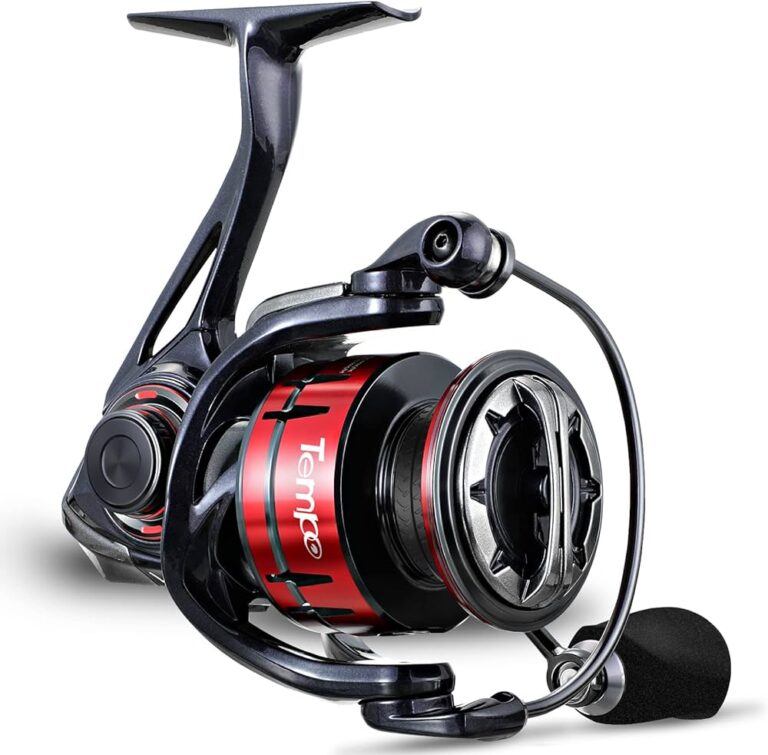How to Fish With Nightcrawlers

To fish with nightcrawlers, cut them into smaller pieces and thread the hook through the head, sliding it up the hook until it covers the entire shank. By using smaller bait, you can attract more fish and increase your chances of catching them.

Credit: www.northlandtackle.com
Introduction To Fishing With Nightcrawlers
Nightcrawlers are highly effective bait for fishing, providing benefits that make them a popular choice among anglers. Their natural movements and scent appeal to a wide range of fish species, increasing the chances of a successful catch. Whether targeting bass, trout, walleye, or catfish, nightcrawlers offer versatility and effectiveness in attracting various fish types. When baiting with nightcrawlers, properly hooking and rigging them can enhance their appeal to fish, making them more likely to take the bait. Understanding how to fish with nightcrawlers and utilizing the best techniques will undoubtedly lead to a rewarding fishing experience. Thus, mastering the art of using nightcrawlers as bait can significantly improve one’s fishing success.
Rigging Techniques For Nightcrawlers
When it comes to rigging techniques for nightcrawlers, it is important to properly rig them to maximize your fishing success. One technique is hooking a nightcrawler on a single hook. Start by threading the hook through the head of the worm and slide it up the hook until it covers the entire hook shank. This method allows the worm to wiggle more naturally in the water, attracting fish to bite. It is also recommended to cut the worm into smaller pieces for panfish and trout fishing, as using an entire nightcrawler can result in small bites and missed opportunities. Nightcrawlers are known to be effective bait for bass, catfish, trout, and walleye, as these fish are attracted to the wiggle and scent of the worm. So, next time you go fishing, try rigging your nightcrawlers properly for a better chance of catching more fish.
Tips For Fishing With Nightcrawlers
When it comes to fishing with nightcrawlers, choosing the right fishing spot is crucial. Look for areas with cover such as rocks, logs, or vegetation, as these provide hiding places for fish. Additionally, pay attention to the water temperature and depth, as different fish species prefer specific conditions.
Next, focus on techniques for attracting fish with nightcrawlers. One popular method is to use a Texas rig, which involves threading the nightcrawler onto a hook and adding a sinker to make it sink to the desired depth. Another technique is to use a jig and let the nightcrawler trail behind it, mimicking a live baitfish. Adding attractants such as fish oil or scent sprays can also increase your chances of success.
Remember to vary your presentation, experimenting with different retrieves and speeds to see what works best for the fish in your area. By following these tips and techniques, you can increase your chances of having a successful fishing trip with nightcrawlers.

Credit: www.hfdepot.com
Targeted Fish Species For Nightcrawler Fishing
When fishing for bass with nightcrawlers, look for areas with plenty of cover and structure such as rocks, logs, and vegetation. Try using a Carolina rig with a sliding weight to keep the bait near the bottom where bass usually feed. Trout are attracted to swift-moving water, so look for areas in the stream or river where the current is stronger. Use a small hook and a split shot to keep the nightcrawler just off the bottom, allowing it to drift naturally with the current.
Best Practices For Using Nightcrawlers As Bait
When it comes to fishing with nightcrawlers, there are some best practices to follow. One important aspect is caring for the nightcrawlers. It’s essential to keep them in a cool, dark place such as a refrigerator or a worm bin. Make sure they have enough moisture by keeping them damp, but not soaked. Avoid exposing them to extreme temperatures, as it can harm their viability as bait.
Another common mistake to avoid is using too much bait on the hook. Nightcrawlers are naturally large and juicy, so there’s no need to use the entire worm. Cut it into smaller pieces, as using a smaller portion can result in better hooking and increased bites. Additionally, avoid casting too far out as nightcrawlers are best used in closer proximity to the angler.
By following these best practices and avoiding common mistakes, you’ll have a better chance of success when fishing with nightcrawlers.

Credit: www.hfdepot.com
Frequently Asked Questions On How To Fish With Nightcrawlers
How Do You Rig A Nightcrawler For Fishing?
To rig a nightcrawler for fishing, cut it into smaller pieces and thread the hook through the head. Slide the worm up the hook until it covers the entire shank. This method works well for catching Panfish and Trout. Avoid using the whole worm as it can lead to small bites and no catch.
What Is The Best Way To Fish With Worms?
The best way to fish with worms is to cut them into smaller pieces for Panfish and Trout. Start by threading the hook through the head of the worm and slide it up the hook until it covers the entire hook shank.
How Do You Keep Nightcrawlers On A Hook?
To keep nightcrawlers on a hook, cut the worm into smaller pieces and thread the hook through the head. Slide the worm up until it covers the entire hook. This method works well for Panfish and Trout. Avoid using the entire worm as it can lead to small bites and no fish on the hook.
What Fish Do You Catch With Nightcrawlers?
Nightcrawlers are effective for catching bass and walleye, as these fish are attracted to the wiggling motion of the bait.
Conclusion
Fishing with nightcrawlers can be a rewarding and effective method for catching various fish species. By understanding the proper techniques for rigging, hooking, and using nightcrawlers as bait, anglers can increase their chances of success. Whether targeting bass, trout, walleye, or catfish, nightcrawlers offer a versatile and enticing option for anglers of all skill levels.




